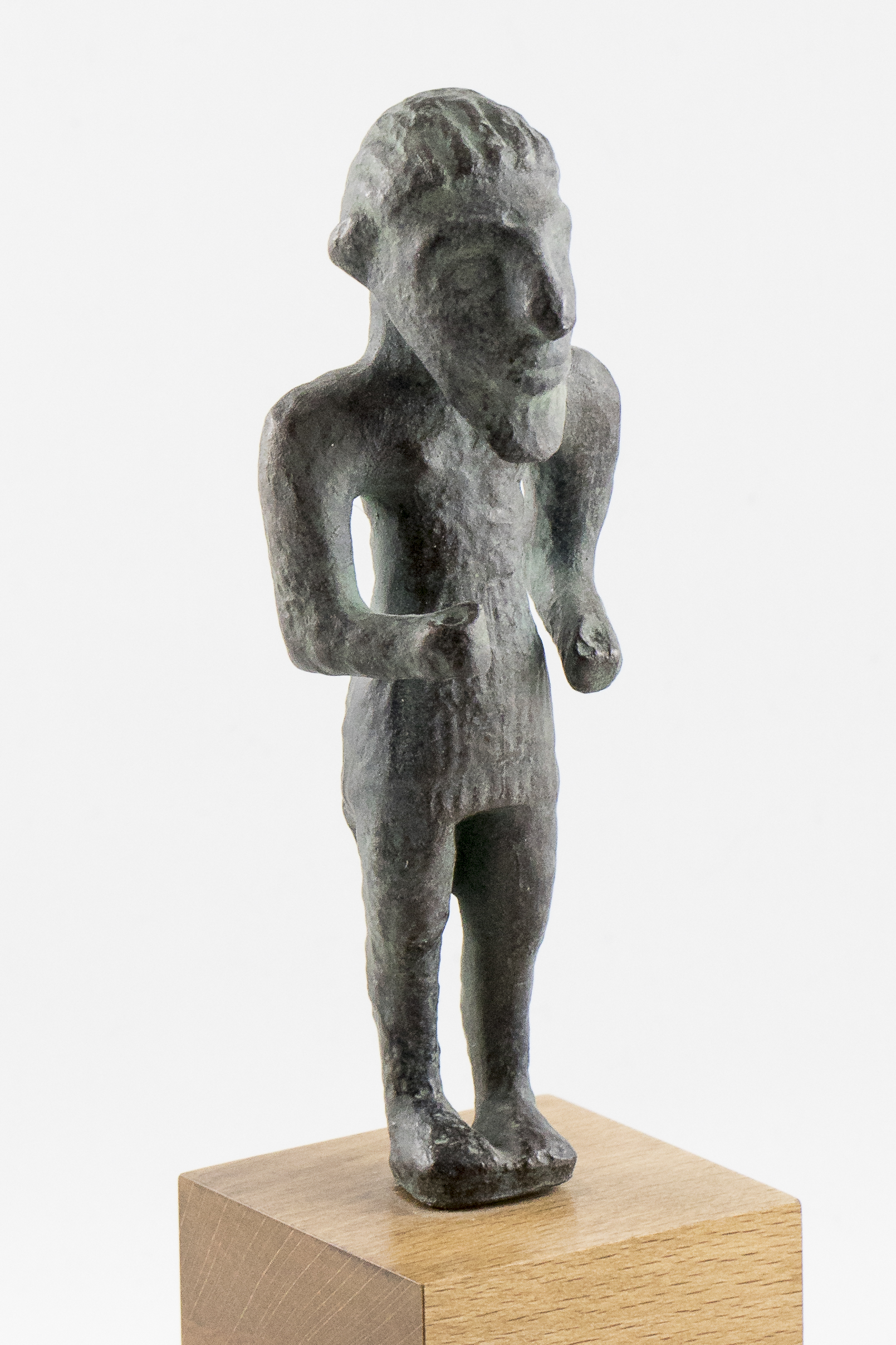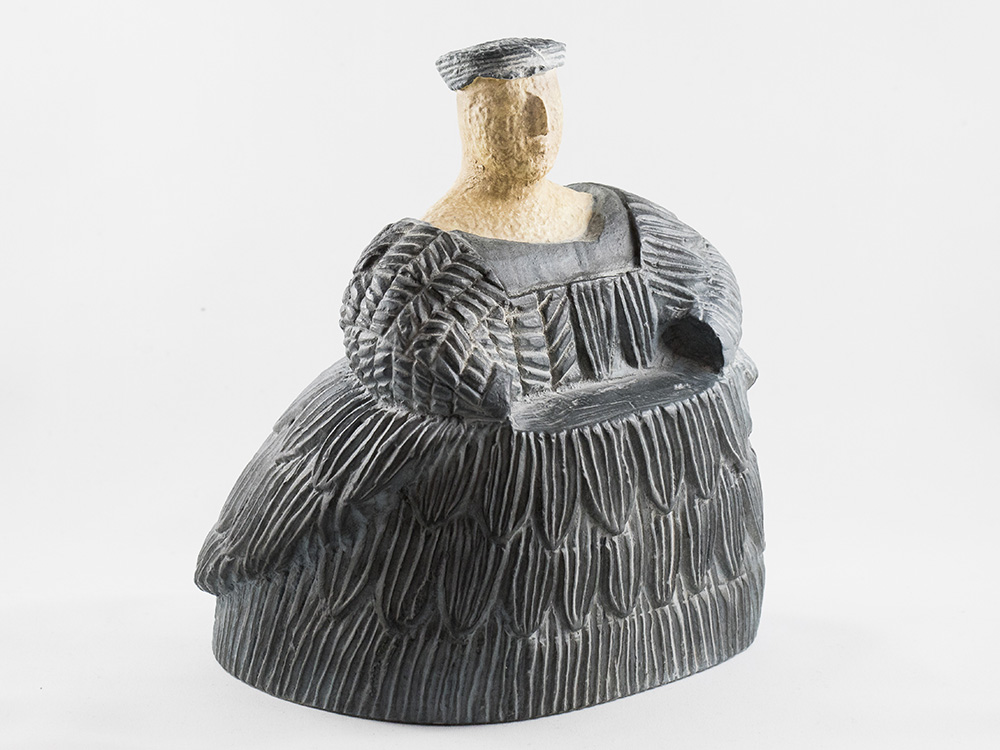
Special exhibition features ancient Near Eastern artwork
Tašiltu: A Celebration of the Nasser Family Collection will be on view at the Museum of Antiquities until Aug. 31, 2019
By Shannon Boklaschuk
A special exhibition opening at the University of Saskatchewan’s Museum of Antiquities on May 10 will showcase 24 pieces of ancient Near Eastern art.
Titled Tašiltu: A Celebration of the Nasser Family Collection, the exhibition includes new replicas donated to the museum by Dr. Kay Nasser, as well as original pottery donated by Dr. Chris and Laura Foley. The name Tašiltu is derived from the ancient Akkadian word meaning celebration.
The Museum of Antiquities, located in the Peter MacKinnon Building on the USask campus, will recognize Dr. Nasser for his recent contributions to the Near Eastern collection by officially unveiling seven new acquisitions. The exhibition is also being held to acknowledge the donation by the Foley family of ancient pottery vessels and sherds from Israel.

“I think that viewers will be excited to see the new additions to the Nasser Family Collection, which provides visitors with the unique opportunity to see the beautiful—and, in many ways, awe-inspiring— artworks of the ancient Near Eastern cultures,” said museum director/curator Dr. Tracene Harvey (PhD), who works in the College of Arts and Science.
“The exhibit also seeks to celebrate the ancient heritage of newcomers who immigrated to Canada from this part of the world. While the collection is culturally varied, we have focused on four key themes that help to demonstrate the richness of society in the ancient Near East. These themes include divinity, royalty, women and nature,” she said.
The ancient Near East—present-day Middle East—refers to the regions of Mesopotamia, between the Tigris and Euphrates rivers, and the Levant, but also extends from Turkey and Egypt in the west to Iran, Pakistan and Afghanistan in the east.

Replicas will be on view from a variety of cultures that flourished in these regions, including Sumerian, Hurrian, Babylonian, Assyrian, Canaanite, Phoenician, Israelite and Islamic. The artworks include relief sculpture, sculpture in the round and ancient pottery.
The majority of the objects included in the exhibition are full-scale replicas from the workshops of the Louvre in Paris and the Staatliche Museen zu Berlin and works done by artist Carrie Allen. The five original pottery vessels featured in the exhibit are part of the Foley Collection of ancient pottery.
It’s not the first time the Museum of Antiquities has featured ancient Near Eastern art, which covers a time period ranging from 3000 BCE to 800 CE. In 2007, the museum held a special exhibition called Oasis: Civilizations of the Desert, which celebrated the first official opening and unveiling of the Nasser Family Collection, along with works that had been previously donated to the museum by others.

Nasser, who has supported the museum since 2005, has made donations toward the expansion of the ancient Near Eastern collection, as well as the donation of an endowment in 2009 that funds two annual bursary awards for distinguished student volunteers of the Museum of Antiquities.
The long-term aim of the museum is to offer a reliable and critical account of the artistic accomplishments of major Western civilizations and epochs. Harvey said the museum is a “unique cultural resource that can be found nowhere else in Canada.”
“The originals of many replicas in the museum’s collections are located in famous museums around the world, including the British Museum, the Louvre, the Staatliche Museen zu Berlin and the Boston Museum of Fine Arts. The only way for people to see the originals is through expensive travel,” she said.

“The Museum of Antiquities provides visitors with the opportunity to see these famous artworks in person, right here at home, along with a number of original objects including ancient coins, glass and pottery. Replica collections, such as the one held by the Museum of Antiquities, also play a key role in preserving cultural heritage, where original artifacts can be subject to the ravages of time, pollution and wars.
"The museum’s collections are also used extensively for teaching and research by university faculty and students, as well as by school teachers and the general public.”
Tašiltu: A Celebration of the Nasser Family Collection opens on May 10, with a public reception to be held at 2 pm. The exhibition will run until Aug. 31, 2019. Entrance to the Museum of Antiquities is free, but donations are welcome. Tours can also be provided by appointment.

